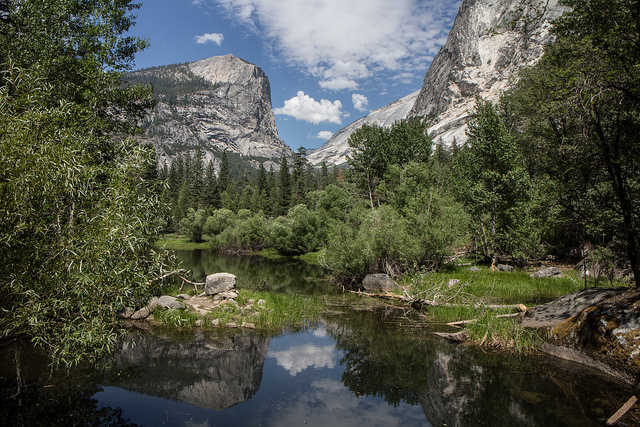
Chiura Obata, “Mono Crater, Sierra Nevada, California”
Sunday, April 2, 2017, 10:30-11:30am
Unitarian Church of Marlborough and Hudson
80 Main St
Hudson, MA, 01749
Free and open to the public
Venue Website
A performance of Dai-Shizen (Great Nature) (2014) will be given by Gabriela Ruiz, flute, and Devin Ulibarri, guitar, at the Unitarian Church of Marlborough and Hudson during a Sunday worship service on April 2, focusing on nature and environmental themes. Distribuição de flores by Heitor Villa-Lobos will also be performed.
Dai-Shizen (Great Nature) for flute and guitar looks at nature through the eyes of a visual artist: Chiura Obata (1885-1975). It is my musical response to Obata’s journey through landscapes, as seen through his artworks, in three movements: California, Topaz, and Sunset.
Obata’s woodblock prints and watercolors from the 1920s and ”˜30s show some of the most extraordinary visual representations of Yosemite National Park ever created, from El Capitan to Mono Lake. The natural landscapes of California were this Japanese-American immigrant’s greatest inspiration.
Obata and his family were then imprisoned for over a year in internment camps during World War II, primarily in Topaz, Utah. Despite demeaning conditions, Obata strove to bring meaning into the lives of those around him. He founded an art school with his fellow internees and created stunning, emotionally charged watercolor paintings juxtaposing the dreary manmade structures of the prison camp against broad expanses of desert, mountains, and fiery sunsets.
In composing this piece, I was particularly inspired by Obata’s ability to follow his philosophy of dai-shizen (Great Nature), nature as a source of artistic inspiration and spiritual harmony, throughout the best and worst moments of his life.
* * *
To preview this work, watch a video of the World Premiere performance at Boston GuitarFest in 2014. To view some of the artworks by Chiura Obata that inspired my music, check out this online gallery from the Fine Arts Museums of San Francisco.






 My forthcoming multimedia project Illuminating John Muir’s Yosemite through Music, Video and New Media was recently selected to receive the Undergraduate and Master’s Students Research/Creative Project Award through the Challenge Grant program at the NYU Steinhardt School of Culture, Education, and Human Development.
My forthcoming multimedia project Illuminating John Muir’s Yosemite through Music, Video and New Media was recently selected to receive the Undergraduate and Master’s Students Research/Creative Project Award through the Challenge Grant program at the NYU Steinhardt School of Culture, Education, and Human Development.